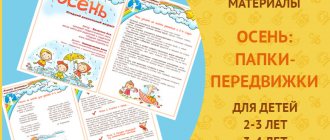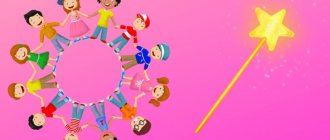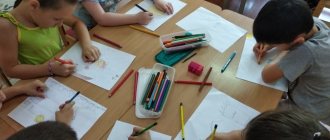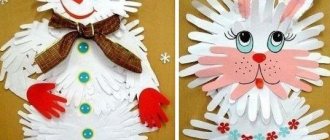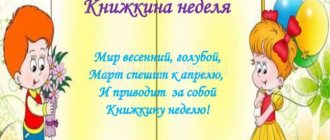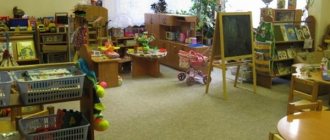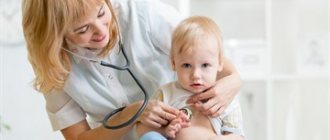Abstract of the GCD "Experiments with flour"
Municipal state educational institution
“Cherepetskaya Secondary School Central District named after. N.K.Anosova"
Summary of educational activities for the cognitive development of children from the “Scarlet Flower” group “Experiments with flour”
Prepared and conducted:
teacher Pechenkina Oksana Sergeevna
2019
Target:
- Introducing children to the properties of flour through children's experimentation.
Tasks:
Educational objectives:
- Expand and clarify children's knowledge about grain crops.
- Introduce the properties of flour.
- Continue to develop in children the ability to foresee the consequences of actions.
Developmental tasks:
- Develop a cognitive interest in experimentation and the ability to draw conclusions.
- Develop auditory, visual, tactile analyzers.
- Develop attention, thinking, memory.
Educational tasks.
- Develop partnerships in children when working in pairs.
- Cultivate respect for the work of adults and respect for bread.
Preliminary work:
- View the presentation “Cereal Crops”;
- Excursion to a bread store, kneading salt dough.
Vocabulary work:
bakery products, confectionery products, ingredients, grains sieve.
Demo material
:
- Preparation for a crossword puzzle.
- Pictures of fields with grain crops.
- Exhibition of flour products, sugar, yeast, wheat, peeled and non-peeled oats.
Handout:
- A flat plate, a magnifying glass, a spoon, a jug of water, two napkins, deep bowls - a set for two children.
Equipment:
Coffee grinders (Manual and electric).
Progress of the lesson.
Organizing time. There is a crossword puzzle with an encrypted word on the board.
Educator
: Guys, I received a strange letter. There are four empty cells in the letter - an encrypted word. And only by completing certain tasks will you help me find out what is written in it.
The first cell contains the letter that is hidden in the word PASTA and is in first place. (M) In the second cell there lives a letter that is hidden in the word BULKA and is in second place. (U) In the third cell there lives a letter that is hidden in the word BUBLIK and stands at the end of the word. (K) In the fourth cell there lives a letter that is hidden in the word BATON, and is in second place in it. (A). Let's read what word we got! (FLOUR)
Educator:
What do you think flour is for?
Children's answers:
(In order to bake bread, loaf, rolls, cookies)
Educator
: Well done! You all answered correctly. Flour is needed to bake bakery, confectionery, and pasta products.
Practical part at the tables:
Educator
: Today we will find out what properties flour has. Look, there are glasses of flour on your tables, carefully smell the flour. Does flour have a smell? (Yes, flour has a smell, but it’s something special) - Flour has a smell.
Pour flour from a glass through a strainer into a plate. What happens to the flour? (Sprinkles) - Free-flowing flour.
Take a pinch of flour and tell me how you felt? What kind of flour? (Light, soft, fluffy, airy) – Flour – soft, fluffy.
Level the flour in the plate by moving the tray slightly to the sides. Try drawing something on the flour with your finger. – It turns out you can write and draw on flour.
Place a spoonful of flour in a glass of water and stir gently. What happened to the flour? (Dissolved) - Add two more spoons. Stir and determine what happened? (It turned out to be a liquid dough) - The mixture became viscous, sticky, dense, thick.
Thus, the dough for baking is kneaded.
In order to bake fluffy buns, various ingredients are added to the dough: butter, salt, sugar, eggs, yeast. – Now, let’s add a little sugar and yeast to one of your glasses. And put in a warm place one glass with yeast and sugar, and the second with only flour. And let’s wait a little (put the blanks on the battery).
Physical education minute.
While our dough is rising, I suggest playing.
Didactic exercise with a ball. The presenter, asking a question, throws the ball to the child, who returns the ball with the answer, etc.)
Where did the bread come from? - from the shop. How did you get into the store? - from the bakery. What do they do in the bakery? - bake bread. Of what? - from flour. What is flour made of? - from grain. Where does the grain come from? - from an ear of wheat. Where does the wheat come from? – grew up in the field. Who sowed it? - grain growers.
- Guys, what do you think flour is made from? (from grain) - What grain is flour made from? (Wheat, oats, barley, rice, corn, rye, buckwheat). - That's right, guys! Many grain crops
and various products are baked from them.
Name what bakery products you know. (Bread, loaf, etc.), confectionery, pasta.
Well done, you know a lot about bread products. I suggest you conduct an experiment today, sit down at your desk and look at what is on the tables.
You have different grains in your plates. Let's look at them with a magnifying glass and determine what they are called (oats, wheat, rice, corn, buckwheat). Today we will try to make flour from oats and wheat ourselves, using manual and electric coffee grinders. (The teacher, with the help of the children, pours beans into coffee grinders and demonstrates the process of crushing the beans, then pours the resulting flour into a transparent container)
Let's see, guys, what kind of flour we got. (Children's answers) - Let's compare it with store-bought flour. (Children's answers)
- Why isn’t she white? Before making white flour, the grains go through several stages of sorting and purification; and only after that the grains produce pure white fluffy flour, the kind we buy in stores. In our country, the most common bread is wheat and rye. Coarse rye bread is especially useful; it contains many microelements necessary for our body.
It’s not for nothing that people have many proverbs about bread, and our children will remind us of them today: Children tell proverbs
Bread is the head of everything. Bread and water are healthy food. It's a bad lunch if there's no bread.
Educator
: For bread to come to our table, many people work on it. These are tractor drivers, combine operators, grain growers, millers, bakers, drivers, sellers, etc.
Take care of our bread, don’t waste your bread! Respect our bread
Don't play with bread. You can't throw away bread! Take care of your bread, Friends!
Physical education minute:
Today I want to offer you the game “The Sea Is Worried Once,” which is already familiar to you, but the figures in this game will not be marine at all. Everyone come out in a circle and listen carefully to which figure needs to be drawn (combine operator, baker, grain grower, tractor driver, driver).
Educator.
Guys, today we conducted experiments, talked about bread, played, and now let’s all make a Spikelet out of salted dough together. Come and take the dough pieces, prepare your workplace, prepare yourself (put on aprons) and get to work.
Children do the work themselves. At the end of the work, the teacher organizes an exhibition of products on a common tray.
Educator:
Look, guys, how many ears of corn we got, they are all different. We'll leave them to dry. And now it’s time to remember our experiment with the dough. Take your glasses and place them on the table. Compare, where is there more dough? Why do you think? (children's answers).
Educator:
How many new and interesting things we learned about flour today. Let's remember what properties flour has? (children's answers). What needs to be done to bring bread to our table? (children sum up the lesson by talking about bread).
During the day, the teacher organizes educational games “Bread Store”, “Bakery”. After drying, the salt dough spikelets are painted and varnished and used for games.
Methodological development Experimentation in the senior group “Be healthy!”
Methodological development Experimentation in the senior group “Be healthy!”
EXPERIENCE No. 2
(Straw + cup of water)
- What do you guys think, is there air inside us?
(Children answer) We’ll check this now.
— There are glasses of water and straws in front of you. Take a straw and drink a little water. Just not all of it. Happened? This means that we can take in water as well as air. Now let's try to blow through the straw into the water. What do you see? (Children answer).
- What do you think these bubbles mean? What is this?
Right! This is the air that was inside us.
- So tell me, do we have air inside?
Of course, in every cell of the body.
— How does air get there?
That's right, through the nose through which we breathe.
- What is the name of the organ into which it enters?
Lungs.
- Where can we get fresh air?
Right. You need to go for a walk.
Go for a walk
Breathe fresh air.
Just remember when leaving:
Dress for the weather!
EXPERIENCE No. 3
(Experience with Coca-Cola and sugar)
— Guys, why do you think candies are so sweet? What do they add there?
(SUGAR). Of course, you already know that sugar in large quantities is harmful to humans. But you can’t even imagine how dangerous it can be if you also drink it with soda!
- Now we will pour the bottle of soda that the Mouse brought us into the basin. We won’t drink it anyway, right? Now take the sugar and throw it into the basin. (STORMAL REACTION BEGINS).
- Just look what will happen inside us if we eat sweets with soda. Guys, how will a person feel if he does this? (THE STOMACH HURTS).
EXPERIENCE No. 4
(Experience with glitter microbes)
- Guys, imagine for a second that we suddenly began to see all the dangerous microbes. And the first one to collect them in my arms was me. (THE TEACHER SPREADS THE PALM WITH GLIMMER CREAM).
- Now I’ll say hello to someone (SHAKE THE HAND OF ONE OF THE CHILDREN). You see, he still has some of my germs. And now he shakes hands with his neighbor, and now he has some of the microbes left, and this is how they are passed on. Most likely, Julia, you got sick because microbes entered your body.
- What should you guys do with these microbes on your hands? (WASH YOUR HANDS WITH SOAP).
—
What if we’re on the road and don’t have the opportunity to wash our hands?
(WIPE WITH WET CLOTHES)
“How germs are transmitted from person to person”
Target:
show children experimentally how germs are transmitted from person to person
Equipment:
body gel with glitter (eyeshadow)
Carrying out:
Before the experiment, an adult applies body gel (shadow) with glitter to his palms. Then he invites the children to shake hands, while tightly squeezing each child’s palm. After this, the adult “unexpectedly” discovers that his palm is dirty and asks the children to look at their palms. Children see traces of glitter on them. A conclusion is drawn about how invisible microbes are also transmitted through contact with another person (or with an object, with an animal).
“I hear - I don’t hear”
Target:
Experimentally show children the role of the ear in capturing and distinguishing different sounds.
Equipment:
cotton wool
Carrying out:
An adult stands behind the child at a distance of 2–3 m, pronounces various words, and each subsequent word must be pronounced in a quieter voice. First, cover one of your child's ears with a cotton swab. Repeat the experiment. Then cover both of the child’s ears with a cotton swab. Repeat the experiment. After this, ask the child to talk about his feelings, so that he explains when it was heard well, when it was worse, when nothing was heard at all and why.
“Who lives in our mouth?”
Goal: to lead children to understand the biological meaning of basic hygiene measures.
Materials: mirror, toothbrush, transparent glass with clean water.
Methodology: the teacher addresses the children: - Now let’s see who lives in our mouth. First, take a glass of water in your hand and examine it. See how clean and transparent it is. (Children perform)
. Then take a toothbrush and brush your teeth without toothpaste. Clean well! Grab the far teeth – chewing ones! Drive up and down as expected! Rinse the brush in a glass of clean water. How has the water changed? (If the children did not rinse their mouths after breakfast, the water will become slightly cloudy; if they brushed it, it will remain clean). The teacher helps the children draw a conclusion: if the water becomes cloudy, there are food residues between the teeth, and microbes are multiplying on them. If it doesn’t become cloudy, it means you’re doing great, you take good care of your teeth, and no one lives in your mouth.
“Why do my teeth hurt?”
Goal: to help children understand the causes of cracks in tooth enamel.
Materials: object covered with gouache, eggshell.
Methodology: the teacher asks the children why their teeth may hurt. Reminds us that all dental diseases begin with cracked enamel. Why might it crack? It is suggested to take an eggshell and hit it against something hard (a crack appears)
. The teacher offers to see how the enamel is destroyed upon impact. He hits an object covered with gouache. The gouache cracks and crumbles, exposing the underlying material of the object.
The teacher helps the children draw a conclusion: the enamel cracks if you hit your teeth hard; if you eat ice cream immediately after hot food or, conversely, after cold food you eat hot; enamel can be destroyed by microbes.
“Tasty - tasteless”
Goal: to prove the dependence of taste sensations on the temperature of the product (using the example of tea, as well as on the sequence of meals of different tastes.
Materials: hot and warm tea, salt water, sugar cubes, sliced lemon.
Methodology: the child is asked to take one sip of hot and warm tea containing equal amounts of sugar. Children conclude that hot tea is not very tasty because it “has little sugar”
. For self-control, the child puts one piece of sugar in each cup and, after stirring, tries again. The result is that warm tea seems sweeter than hot tea. After taking a sip of salt water, children are encouraged to try plain water. It seems salty to them. After a cup of sweet tea, lemon seems much more sour than it actually is.
“Tasty - tasteless”
Goal: to prove the dependence of taste sensations on the temperature of the product (using the example of tea, as well as on the sequence of meals of different tastes.
Materials: hot and warm tea, salt water, sugar cubes, sliced lemon.
Methodology: the child is asked to take one sip of hot and warm tea containing equal amounts of sugar. Children conclude that hot tea is not very tasty because it “has little sugar”
. For self-control, the child puts one piece of sugar in each cup and, after stirring, tries again. The result is that warm tea seems sweeter than hot tea. After taking a sip of salt water, children are encouraged to try plain water. It seems salty to them. After a cup of sweet tea, lemon seems much more sour than it actually is.
“The harmful effects of Coca-Cola on the human body”
Goal: to show children the harm of Coca-Cola
for our health.
Materials for experiments : Bottles of Coca-Cola or Pepsi-Cola, transparent cups, rusty objects, a cup with traces of tea, a piece of sausage, Mentos
(preferably not glazed, baby tooth.
Experiment 1 The children took a transparent glass, poured Coca-Cola into it and lowered the tooth. On the second day it turned black, from which the children concluded that Coca-Cola contains dyes that penetrate even hard teeth. On the third day a crack appeared on the tooth, and on the fourth day the tooth broke into two halves. Conclusion: The substances contained in Coca-Cola harm our body and destroy teeth.
Experience 2 . For the experiment, we cut a piece of sausage into two halves. One half was placed in water, the other half in cola. On the second day, the sausage, placed in water, did not lose its appearance, but the sausage in cola turned into a mushy puree. Conclusion: Cola has destructive properties for meat.
Experience 3 . They took two rusty bolts. One was placed in a glass of water, the other with cola. On the second day, the bolt in the water was covered with another layer of rust, and the bolt in the cola, on the contrary, was even cleared of it. Conclusion: Coca-Cola even eats away rust.
Experience 4 . A white cup with traces of tea was taken. The traces were not washed off with ordinary water. The children poured cola into a cup and went for a walk. After the walk, the cup was rinsed. The traces of tea are gone. Conclusion: Coca-Cola contains substances that destroy stubborn stains.
Experiment 5 We took a bottle of cola for a walk, opened it and put three Mentos jelly beans under the cap.
. Then they sharply unscrewed the lid. Cola splashed out in different directions like a high foamy fountain. Conclusion: You can’t drink candies containing mint with cola!
Experience 6 . Coca-Cola was poured into a glass and left for a week. A week later, the water from the cola evaporated, and a viscous syrup remained in the glass. Conclusion: Coca-Cola has a lot of sugar.
Conclusion: Thus, after conducting a series of experiments , we saw that Coca-Cola destroys teeth and meat, it contains a lot of dyes. Coca-Cola contains substances that corrode rust and tea deposits; it should not be drunk with all foods . Coca-Cola also contains a lot of sugar, which is harmful to our body. Coca-Cola causes great harm to our body; it is unsafe for our health.
